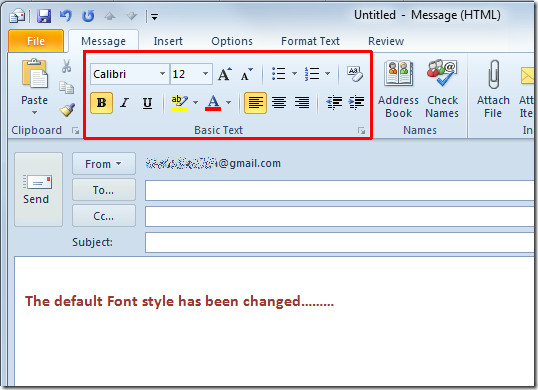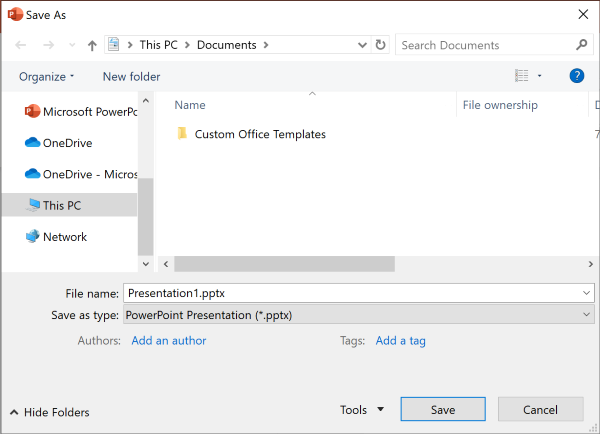
- #How to change default settings in microsoft word 2010 how to
- #How to change default settings in microsoft word 2010 install
- #How to change default settings in microsoft word 2010 code
#How to change default settings in microsoft word 2010 code
At the end of the script, you should find this code:Ĭode: that code for the following code in each shortcut script, and save the files. Double click on each of the shortcuts that were made for Word, Excel, and Powerpoint, and choose to Display the file in Gedit. Open Nautilus and navigate to ~/.PlayOnLinux/shortcuts. Unfortunately, what you just did won't work if there are spaces in the file or folder names.

Now, that filetype is associated with Word, and you can go through all of those steps again substituting the right names for Excel and Powerpoint. docx file, go to Properties, and go to the "Open With" tab, click "Show Other Applications" and find "sktop" in the list.

Change that name to something like sktop. desktop launcher file with something like "playonlinux_userdefined" in the name. Now open up Nautilus, press Ctrl+H if hidden files aren't showing, and navigate to ~/.local/share/applications and find the. By the time you're done, it will work properly when you double click it in Nautilus. Note, that it will try to open the file with Word, and at this point it will not work. For that custom command, enter the following for Word 2007:Ĭode: playonlinux -run "Microsoft Word 2007" z:%f Enter whatever number says "Other" so that you can enter a custom command. When you type this, it will give you options of what you want the default app to be for that file. Once you're in that folder, note the name of your Word document file, and type: Open a terminal, and cd to a folder that has a. Never fear, that's why we have the command line. This used to be easy to do with the GUI, but since they changed to Gnome 3 in 11.10, you can't do that anymore. Since PlayOnLinux installed apps don't show up in the "Open With" dialog in Nautilus, you have to create a custom command for Nautilus. desktop file for associating your file types.

Associating files with MS Office that was installed with PlayOnLinux After this, you can click on the icon and use the file browser to point it to whatever icon you want to use for that launcher.Īfter doing this, your app launcher should show up by doing a Dash search. For anything else, you just would put whatever app name shows up in the PlayOnLinux window, and put that name in quotes. Then in the "Command" box, for Word 2007, we'll enter this codeĬode: playonlinux -run "Microsoft Word 2007"įor Excel 2007, you would enter "Microsoft Excel 2007" leaving the quotes in it. For Microsoft Word, we'll enter Microsoft Word as the name. In the window that comes up, first enter a name for your launcher. desktop file so that a new instance your Office programs can be launched from Dash.Ĭode: gnome-desktop-item-edit ~/.local/share/applications/ -create-new desktop file so that a new instance of Word can be launched from the Dash. desktop files for each Office program (Word, Excel, etc.). When you are preparing to do this, be aware that you will have to create two separate.
#How to change default settings in microsoft word 2010 how to
Also, PlayOnLinux created nice shortcuts to the apps on the desktop, but it didn't create any gnome-desktop launchers that will show up in Dash in Unity or Gnome Shell.Īfter a lot of hard work and headaches, I finally figured out how to do both of those things, so I thought I would share that experience for future reference, and for anyone else who might need it. When I installed Office 2007 in PlayOnLinux, it didn't leave any way to associate filetypes. When I had Office 2007 installed with Wine, I could easily set filetype associations in Nautilus to Word and Excel.

What I learned about PlayOnLinux is that it makes installing things a dream, but it makes the general usability of those things an absolute nightmare.
#How to change default settings in microsoft word 2010 install
Today, after beating my brains out trying to install Office 2007 with Wine 1.4 in Precise, I ended up resorting to using PlayOnLinux. As you can see it tells us that the US spelling of the word is incorrect, and this is how to change microsoft word language.Preface: This is a howto, not a question. To make sure that we successfully changed the language lets type in a word that is spelt differently in the UK, “Colour”. Select “English (UK)” from the list and click the “Set as default” button, and in the dialog box that appears, click “Yes” and then click “OK” to close the “Language” window and save the settings. In this example we are changing it from “English (US)” to “English (UK)”. In this window you need to select the language that you want to change the system to. In the new options that appear you will see the “Language” icon, click on this and in the menu click on “Set Proofing Language…”. Open Microsoft Word and in the tabs menu at the top you need to click on the “Review” tab. In this tutorial you are going to be shown how to change microsoft word languageso you can take advantage of features such as spell checker. This tutorial will show you how to change the default language in Microsoft Word


 0 kommentar(er)
0 kommentar(er)
